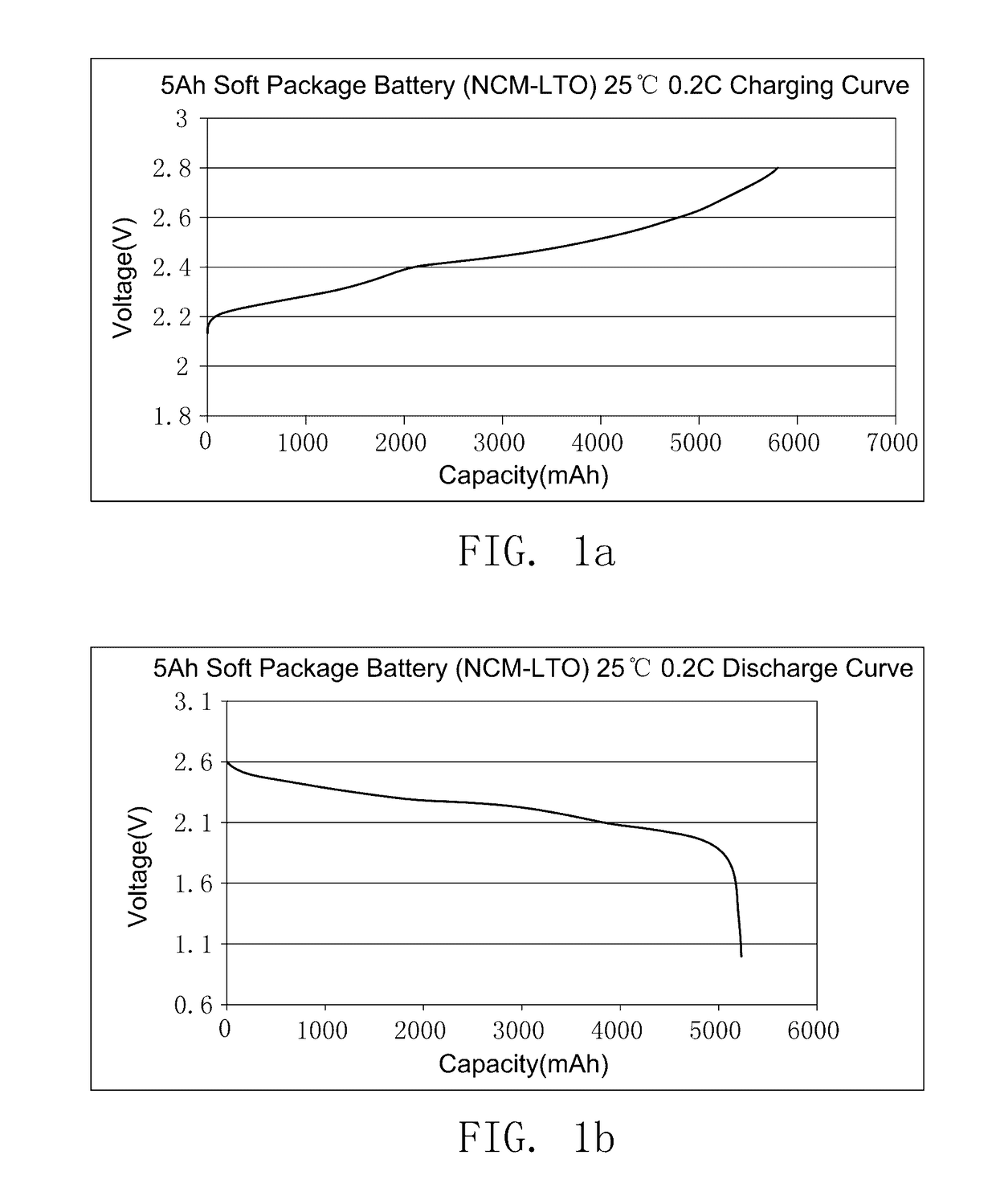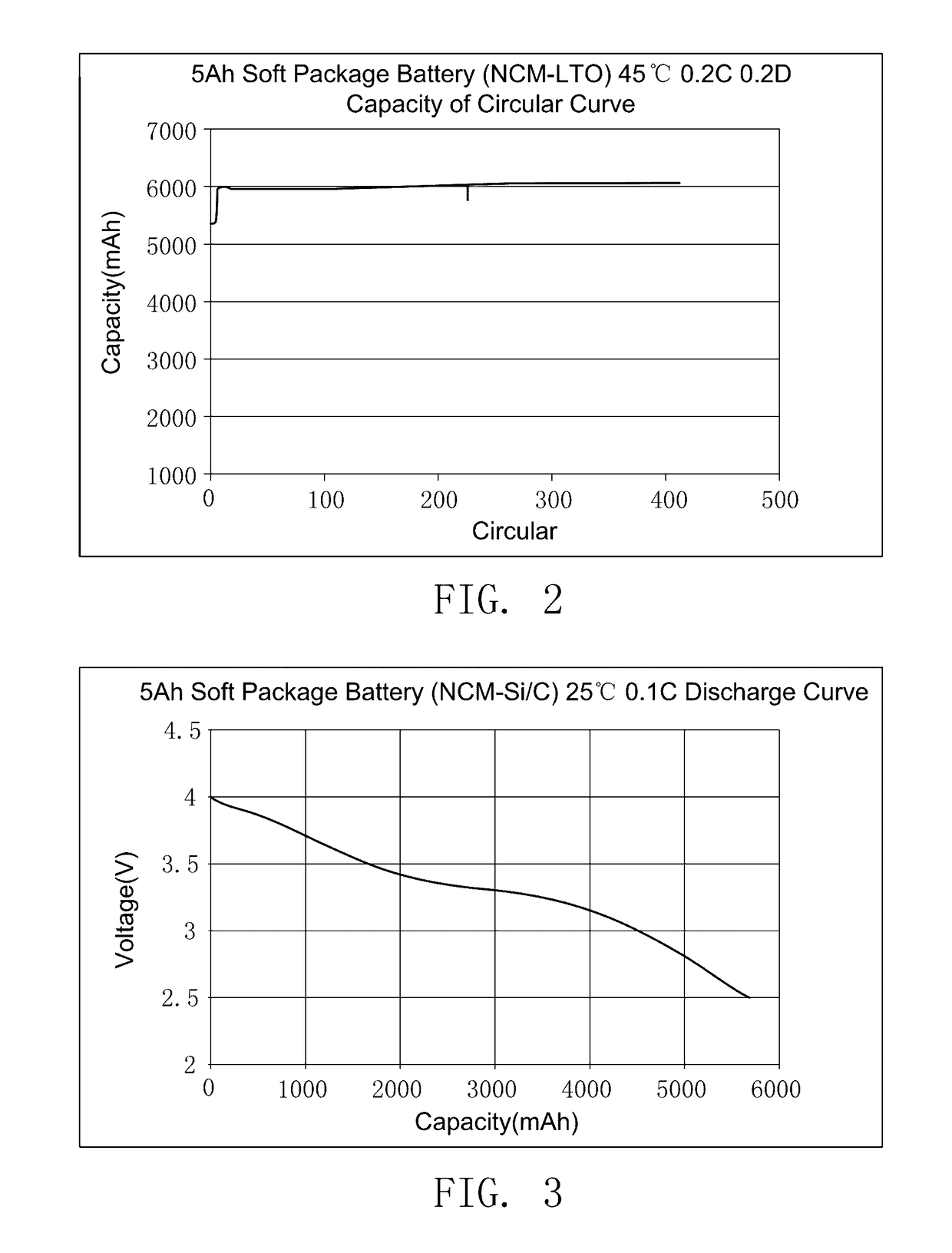The preparation method of ionic liquid and the secondary battery
a technology of ionic liquid and secondary battery, which is applied in the direction of secondary cell servicing/maintenance, organic electrolytes, cell components, etc., to achieve the effects of low production cost, broadening the range of potential raw materials, and increasing the variety of synthesized ionic liquids
- Summary
- Abstract
- Description
- Claims
- Application Information
AI Technical Summary
Benefits of technology
Problems solved by technology
Method used
Image
Examples
embodiment 1
[0092]Triethylamine (Et3N, 606 g) and 100 mL of dimethyl carbonate were added into a pressure vessel together under nitrogen atmosphere, concentrated sulfuric acid (H2SO4, 300 g, 98%) was then added under cooling measures. After addition, the mixture was heated to 200° C., during this process the pressure increased. If the reaction pressure exceeded 3.0 MPa, then to prevent any further increase in reaction pressure by using an air evacuation valve. The reaction continued for 0.2 h. After reaction, cooling to room temperature, removing low boiling substance under decompression and washing the remains, the reaction yielded N-methyl-N-triethylammonium sulfate (950 g).
embodiment 2
[0093]N-n-propyl pyrrolidine (500 g) and 1000 mL of dimethyl carbonate were added into a pressure vessel together. Bis(trifluoromethylsulfonyl)imine (1234 g) was slowly added under nitrogen atmosphere. During the process above, the temperature was kept no higher than 60° C. After addition, the mixture was reacted under 150° C. and 1.6 MPa for 20 h. During the reaction, some of the gas inside the vessel was released by the air evacuation valve to avoid excess pressure. After reaction, cooling to room temperature and removing low boiling substance under reduced pressure, and then washing the remains, the reaction yielded N-methyl-N-propylpyrrolidinium bis(trifluoromethylsulfonyl) imide (1675 g).
embodiment 3
[0094]N-n-propyl pyrrolidine (500 g), dimethyl carbonate (500 g) and 500 mL of methanol were added into a pressure vessel, then raising the temperature to 120° C. After that, feeding bis(trifluoromethylsulfonyl)imide (1236 g) into the reactor with certain flow, during which process the temperature in the reactor was kept at 120˜130° C. and the feeding continue for 12 h. After feeding of the predetermined amount of bis(trifluoromethylsulfonyl)imide, the temperature was increased up to 150° C. and reaction continued for 2 h. During the reaction, if the reaction pressure exceeded 2.6 MPa, some of the gas inside the vessel was released by the air evacuation valve to avoid excess pressure. After reaction, cooling to room temperature and removing low boiling substance under reduced pressure, and washing the remains washed, the reaction yielded N-methyl-N-propylpyrrolidinium bis(trifluoromethyl sulfonyl)imide (1704 g).
PUM
| Property | Measurement | Unit |
|---|---|---|
| temperature | aaaaa | aaaaa |
| temperature | aaaaa | aaaaa |
| temperature | aaaaa | aaaaa |
Abstract
Description
Claims
Application Information
 Login to View More
Login to View More - R&D
- Intellectual Property
- Life Sciences
- Materials
- Tech Scout
- Unparalleled Data Quality
- Higher Quality Content
- 60% Fewer Hallucinations
Browse by: Latest US Patents, China's latest patents, Technical Efficacy Thesaurus, Application Domain, Technology Topic, Popular Technical Reports.
© 2025 PatSnap. All rights reserved.Legal|Privacy policy|Modern Slavery Act Transparency Statement|Sitemap|About US| Contact US: help@patsnap.com



